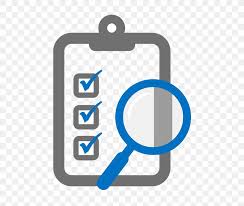Strategic Implementation of a Customer Relationship Management (CRM) System
In today's competitive business environment, the strategic deployment of a robust Customer Relationship Management (CRM) system is paramount for achieving sustainable growth, enhancing customer satisfaction, and maximizing profitability. A well-integrated CRM system streamlines sales processes, optimizes customer service delivery, and provides actionable insights into customer behavior. This article outlines a structured approach to CRM implementation, leveraging established organizational behavior and systems theory principles to ensure lasting success.
Phase 1: Foundation and Planning
1. Defining Strategic Objectives and Key Performance Indicators (KPIs): The initial phase necessitates a clear articulation of business objectives and the desired outcomes of CRM implementation. This involves defining specific, measurable, achievable, relevant, and time-bound (SMART) goals, aligning with overall business strategy. For example, if the objective is to increase customer retention, KPIs could include customer churn rate reduction and Net Promoter Score (NPS) improvement. This aligns with the Goal-Setting Theory, which posits that clearly defined and challenging goals lead to improved performance.
2. CRM Software Selection and Vendor Evaluation: The choice of CRM software is critical. A thorough evaluation process, considering factors such as scalability, user-friendliness (influenced by the Technology Acceptance Model), customization capabilities, integration with existing enterprise resource planning (ERP) systems, and security features, is crucial. This step requires a rigorous analysis of vendor capabilities and alignment with the organization's technological infrastructure and future growth plans.
3. Data Cleansing and Migration: Prior to data migration, a thorough data cleansing process is essential. This involves identifying and correcting inaccuracies, removing duplicates, and ensuring data consistency. This step, rooted in data quality management principles, prevents downstream issues and ensures data integrity for effective analytics. The importance of accurate data is central to the Resource-Based View of the firm, where high-quality data is a valuable and defensible resource.
Phase 2: Implementation and Integration
4. Stakeholder Engagement and Change Management: Successful CRM implementation necessitates active engagement with key stakeholders from all relevant departments (sales, marketing, customer service). Kotter's 8-Step Change Management Model provides a framework for managing organizational change effectively. This involves communicating the vision, building a coalition, and empowering employees to adopt the new system, addressing resistance to change pro-actively.
5. System Customization and Workflow Optimization: The CRM system should be customized to align with existing business processes and workflows. This involves configuring the system to reflect specific sales cycles, customer service protocols, and marketing automation strategies, ensuring optimal efficiency and user adoption. This process utilizes Business Process Reengineering principles to streamline operations.
6. Employee Training and Support: Comprehensive training programs are vital to empower employees to utilize the CRM system effectively. This involves both initial training and ongoing support, including user manuals, online tutorials, and dedicated help desk support. This investment is essential for maximizing user adoption and mitigating resistance to change, a key element in the Diffusion of Innovations theory.
7. System Integration and Data Synchronization: Seamless integration with existing systems, such as email marketing platforms and ERP systems, is essential for a holistic view of customer interactions. This ensures data consistency and eliminates data silos, improving operational efficiency and analytical capabilities. This approach applies principles of Enterprise Systems Integration.
Phase 3: Optimization and Continuous Improvement
8. Process Automation and Efficiency Gains: Leverage the CRM's automation capabilities to streamline repetitive tasks, reducing errors and freeing up employee time for more strategic activities. This approach aligns with Lean Manufacturing principles, focusing on eliminating waste and improving efficiency.
9. Data Analytics and Business Intelligence: Utilize the CRM's analytical features to track key metrics (e.g., customer lifetime value, conversion rates), identify trends, and make data-driven decisions. This requires applying principles of Business Analytics and data visualization to extract actionable insights.
10. Cultivating a Customer-Centric Culture: Foster a customer-centric culture by promoting the use of the CRM system as a tool to enhance customer experience. This requires a shift in organizational mindset, aligning with principles of Customer Relationship Management (CRM) philosophy.
11. Continuous Monitoring and Performance Evaluation: Regularly assess the system's performance against established KPIs, making adjustments as needed. This iterative process ensures the CRM system remains aligned with evolving business needs and objectives.
12. User Feedback and System Enhancement: Solicit feedback from employees to identify areas for improvement and incorporate suggestions into system enhancements. This aligns with iterative development methodologies, emphasizing continuous improvement.
13. Staying Current with CRM Advancements: Stay abreast of industry trends and technological advancements in CRM to ensure the system remains relevant and competitive. This requires ongoing professional development and research.
14. Leveraging Expert Consulting: Consider engaging CRM consultants for expert guidance and support, particularly during the initial implementation phase. This can help avoid common pitfalls and accelerate the process.
Conclusions and Recommendations
Successful CRM implementation demands a structured approach that considers both technical and organizational aspects. Adopting a phased approach, as outlined above, enhances the probability of success. Continuous monitoring, adaptation, and a commitment to ongoing training are critical for long-term effectiveness. The application of relevant theories, such as Goal-Setting Theory, Kotter's Change Management Model, and the Technology Acceptance Model, provides a strong theoretical framework for guiding the implementation process. Further research could focus on comparative analyses of different CRM systems across various industry sectors, investigating the impact of CRM implementation on specific organizational performance metrics, and developing more robust models for predicting the success of CRM projects. The return on investment (ROI) from CRM implementation is dependent on proper planning, execution, and ongoing commitment.
Reader Pool:
What are your experiences or insights regarding the challenges and opportunities associated with implementing a CRM system within a specific organizational context?
```





No comments yet. Be the first to share your thoughts!